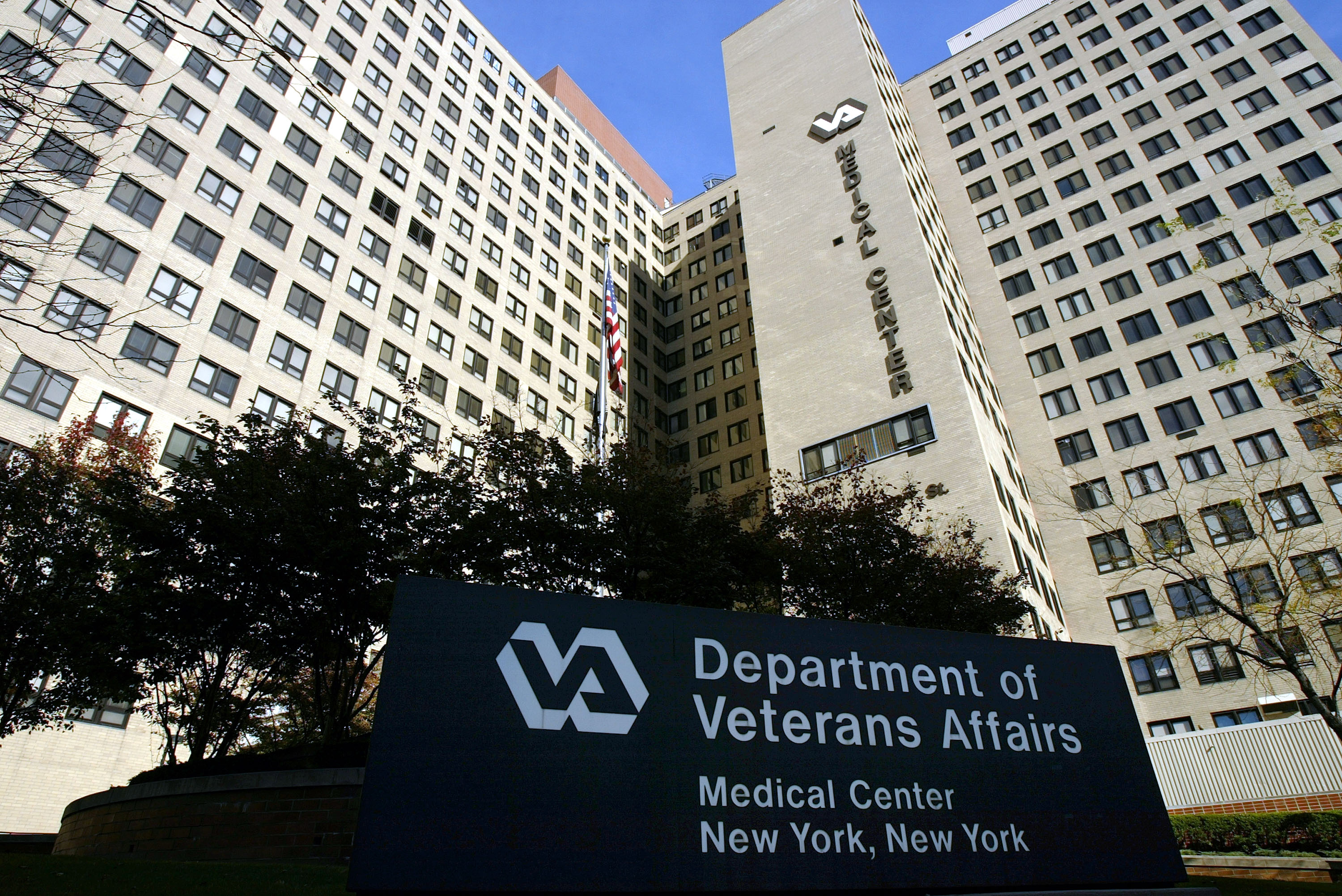
The United States’ opioid crisis is bad and getting worse.
More than 63,000 Americans died from opioid-related overdoses in 2016, according to a December report from the Centers for Disease Control and Prevention’s National Center for Health Statistics. That figure marks a 21 percent jump over the previous year and three times the rate of overdose deaths in 1999. While the causes of the epidemic are manifold, medical overprescribing is a significant problem. In fact, between 42 to 71 percent of opioids prescribed by doctors to surgical patients go unused.
But new data suggests that at least one medical institution is cutting back on dangerous prescription habits—sort of. The Department of Veterans Affairs (VA)—the second-largest federal agency and public medical provider in the U.S. behind the Department of Defense—began publicly releasing data on the opiate prescribing rates for VA medical facilities nationwide. And, according to USA Today, almost every VA facility has experienced a steady drop in its prescription rates since 2012, with an overall decline of 41 percent.
This is a tremendous turnaround for a VA that for years embodied the worst trends of the wider American opioid epidemic. Given the physical and mental trauma of combat, U.S. service members are far more likely to be prescribed opioids for everything from chronic pain to post-traumatic stress disorder. Data obtained by the Center for Investigative Reporting under the Freedom of Information Act indicated that, from 2004 to 2012, VA prescriptions for four of the most common opioids—hydrocodone, oxycodone, methadone, and morphine—exploded more than 270 percent, to the point that 7.7 percent of VA patients were on take-home opioids by the 2012 fiscal year; by 2014, the agency claimed to have issued 1.7 million opioid prescriptions to 443,000 vets who showed up at its 143 medical facilities for outpatient care.
Unlike other branches of the wider American medical system, the VA was forced to reckon with its overprescribing habits. A 2012 Drug Enforcement Administration rule changed the regulations regarding how VA clinics doled out pain medications, and CIR chronicled the phenomenon of overprescription at the VA in 2013; in 2014, a VA inspector general report revealed the lax prescription rules led to the deaths of several veterans who received treatment at a hospital in Tomah, Wisconsin. Indeed, the CIR data showed that the number of opioid pills prescribed to the 25,000 veterans who visited Tomah annually grew from around 50,000 in 2004 to 712,000 in 2012 under the supervision of chief of staff David Houlihan. Veterans came to call Tomah “Candy Land.”
In the aftermath of the Tomah scandal, the VA adopted stricter rules regarding the prescribing and use of opioids. In 2014, the VA embraced the Opioid Safety Initiative, an education-focused program that featured a detailed toolkit of pain management guidelines for prescribers to educate patients, state prescription drug monitoring programs, and state-run databases for controlled substances that allowed VA medical providers to take non-VA prescriptions into account when considering patient medical care. Prior to Tomah, non-prescription options were few and far between: A 2014 VA Office of Inspector General audit found that, while psychotherapy and behavioral therapy can effectively “reduce pain and improve function in chronic pain patients,” only half of opioid-prescribed patients in 2012 ever underwent a psychiatric session.

(Photo: Spencer Platt/Getty Images)
The decline in prescribing rates may hearten those worried about the government’s ability to respond to the opioid crisis, but it’s no silver bullet. A November testimony by VA Inspector General Michael Missal indicated that, of the more than 877,00 veterans prescribed opioids in 2016, some 14,000 (15 percent) filled prescriptions from non-VA medical centers through the Veterans Choice Program that extended VA health insurance coverage to non-agency providers. Those 14,000 vets picked up 85,729 scripts between October of 2015 and September of 2016.
“With the expansion of community partnerships, a significant risk exists for patients who are prescribed opioid prescriptions outside of VA,” Missal said. “Specifically, gaps in health information exchanges between VA and non-VA providers can put certain patients at significant risk for serious medication interaction and unintentional or intentional overdose.”
Conversely, the VA’s sudden adoption of strict limits may have had adverse effects on the very patients they were meant to help. As opioid prescriptions fell for the VA between 2012 and 2016, data indicates overdose deaths have only continued to rise since then. The reason for this, according to a landmark 2016 surgeon general’s report: Addiction has nothing to do with supply, hence the corresponding explosion in overdoses from heroin and deadly fentanyl in the last decade despite fluctuations in opioid prescription misuse.
Opioid withdrawal is no joke, according to basically all the medical literature, and Draconian limits that aren’t responsive to care will only exacerbate the problem. A 2015 series by the Minnesota Star Tribune chronicled the consequences of the VA leaving veterans in the cold after years of supplying them with opioids: overdoses, suicides, and street-level drug deals. The VA’s prescription rates have fallen, and that may signal a spot of hope on the horizon for those who feel the opioid epidemic is impossible to address from the perch of government bureaucracy. But let’s be clear: The opioid crisis among veterans is a long ways from being over.





